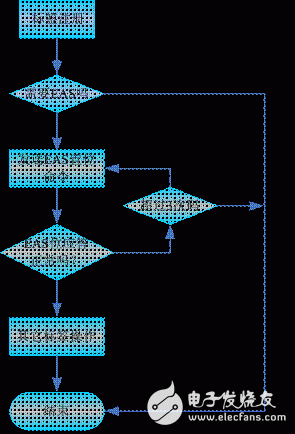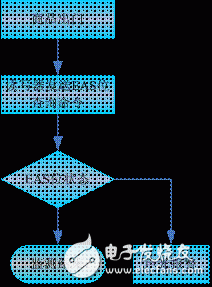
Privacy statement: Your privacy is very important to Us. Our company promises not to disclose your personal information to any external company with out your explicit permission.
![]() July 13, 2022
July 13, 2022
With the continuous improvement of people’s living standards and the continuous evolution of the way of life to leisure and comfort, open-shelf sales and open-shelf lending have become the main means of people’s shopping and lending in stores, bookstores, and libraries. It serves as a major means of improving service quality and economic efficiency. However, the following problem is: the loss of goods and books has become a headache for businesses. It has seriously harmed the interests of businesses, caused the loss of business profits, and even led to the closure of shopping malls. How to prevent theft of goods and protect the interests of businesses have attracted more and more attention of retailers. Under this background, the EAS System has gradually been recognized and accepted by a large number of merchants, and applications in shopping malls, libraries, etc. have become increasingly widespread.
EAS (Electronic Article Surveillance), also known as electronic goods piracy prevention system, is one of the commodity safety measures widely used in the retail industry. It is a high-tech electronic anti-theft device. It uses high-tech means to give the product a self-defense capability that can effectively protect the product and prevent theft of the product. In foreign countries, 90% of retailers use EAS systems to reduce theft rate. In China, EAS systems are gradually accepted and adopted by a large number of merchants. The Eas System is the most reliable and economical high-tech management tool for reducing thefts and reducing losses.
A typical EAS system generally consists of three parts: 1) an electronic sensor attached to a commodity; 2) an electronic sensor control device to authorize the normal entry and exit of the commodity; 3) a monitor that emits certain radiation within a certain area of the outlet. Monitoring space.
The working principle of the EAS system is that in the monitoring area, the transmitter transmits signals to the receiver at a certain frequency. Transmitters and receivers are generally installed at entrances and exits of retail stores and libraries, forming a certain monitoring space. When a tag with a special feature enters the zone, it will interfere with the signal sent by the transmitter. This interference signal will also be received by the receiver. After being analyzed and judged by the microprocessor, the alarm will sound.
Divided according to the application of the detection signal, can be divided into radio systems, electromagnetic systems, microwave systems, frequency systems, smart systems and acousto-magnetic systems and other different types. At present, EAS systems have also been widely used in major shopping malls, bookstores, and libraries in China. The basic working principles are as follows:
(1) Attach the magnetic strip to the product.
(2) Install a detector at the outlet of the mall.
(3) The authorized goods are degaussed by a dedicated degausser to deactivate the magnetic stripe.
(4) When unauthorized goods (not degaussed) pass through the exit, the door detector detects and issues an alarm to intercept the goods and go out.
Second, RFID technology concerns EASWith the continuous advancement of technology, in recent years, especially in the past five years, the application of Internet of Things technology has achieved rapid development, especially in the areas of warehousing logistics, intelligent transportation, and the Internet of Things has demonstrated a strong technical strength and vitality. As one of the main technologies of the Internet of Things, the application of RFID technology has attracted more and more attention. As a bar code upgrading technology, RFID technology has bar code superiority, such as multi-target recognition, long-distance recognition, confidentiality, etc., and will not be repeated here.
What role should be played in the era of RFID as a companion EAS technology developed with barcodes? Is it continuing to exist intact? disappear? Or keep pace with RFID technology and keep up with the times? The first thing to be sure is: EAS is an effective store anti-theft technology that will not end its own historical mission because of the withdrawal of barcodes. In combination with RFID technology, an EAS technology solution based on RFID technology is proposed. Based on the traditional EAS, this technology stores the anti-theft information in RFID electronic tags. Through the identification of electronic tags, the technology can be used to prevent theft of goods.
III. Application of UHF Electronic Tag EAS FunctionRFID is divided according to the frequency, there are low frequency, high frequency, UHF, microwave and other RFID, which have their own advantages in different fields of application. This article describes only the EAS technologies involved in ultra-high frequency (UHF) RFID that are currently widely used in the fields of warehousing and logistics retail, library management, and intelligent transportation.
Take large-scale retail applications as an example. If UHF RFID technology is used for quick product entry and exit management, and the original EAS system is used for access control, it will inevitably result in the existence of two systems at the same time, resulting in no waste and management. Bring difficulties and increase the operating costs of businesses.
Because the ISO18000-6C protocol does not specify the relevant standards for EAS, different electronic tag chip design companies have different considerations in the design of EAS. This article takes NXP's second-generation RFID chip as an example to briefly introduce the EAS working principle of RFID electronic tag chip.
1. Registration of electronic tags
Before the electronic tag is used, it needs to be registered. Registration is the process of writing the basic information of the article to be attached to the electronic tag and recording the information into the database. Each electronic tag has a special read/write EAS bit that can be modified only by specific commands. During registration of the tag, the EAS bit is set at the same time. The EAS bit set process can refer to Figure 1.

Figure 1 EAS bit position
2, product delivery
Before the electronic label-attached product is released from the library, the reader needs to send a special instruction to clear the EAS bit in the electronic label. Only products that perform this step can be safely passed through the exit detection device. Taking a book loan as an example, when a reader selects a book and needs to borrow it, he or she can apply for a loan on the self-service borrowing machine. The self-service borrowing machine automatically clears the EAS bit. Readers can safely pass the inspection door. If you do not apply for a loan, there will be an audible and visual alarm when the door is detected. The monitoring flow chart is as follows:

Figure 2 Product Outbound Monitoring Process
At present, there are more and more companies that can provide UHF RFID electronic tags. The definition and access methods of the EAS bit are different for different companies' electronic tags. In the EAS design of different RFID tags, it is necessary to first obtain the access instructions. There are no dedicated EAS bits for RFID tags provided by other companies. What should you do if you want to use the EAS feature for these tags? The usual practice is to open up 1 to many bits of data in the EPC area or user data area to simulate the EAS function. The specific location and size can be defined according to the development needs. When the EAS function is needed, the monitoring module may first analyze the EAS bit when reading the electronic tag, and if the abnormality is found, the alarm is activated. However, the use of this analog EAS function is generally less efficient than the dedicated EAS function.
Fourth, summaryThe traditional retail industry and other fields mostly adopt the bar code plus EAS sales management model. With the promotion and application of RFID technology in the retail industry and other fields, it is bound to bring about innovative changes to the industry. At the same time, because RFID technology itself considers the EAS function, in many places where RFID technology is applied, EAS functions can be easily realized, simplifying management, and reducing costs. It is a high-end shopping mall, large and medium-sized supermarkets, libraries, etc. that display humanized management and The iconic equipment of scientific and technological content is an inevitable trend in the development of modern retail and other fields.
The above is the Three minutes to learn more about the EAS function of UHF RFID tags we have listed for you. You can submit the following form to obtain more industry information we provide for you.
You can visit our website or contact us, and we will provide the latest consultation and solutions
Send Inquiry
Most Popular
lastest New
Send Inquiry

Privacy statement: Your privacy is very important to Us. Our company promises not to disclose your personal information to any external company with out your explicit permission.

Fill in more information so that we can get in touch with you faster
Privacy statement: Your privacy is very important to Us. Our company promises not to disclose your personal information to any external company with out your explicit permission.